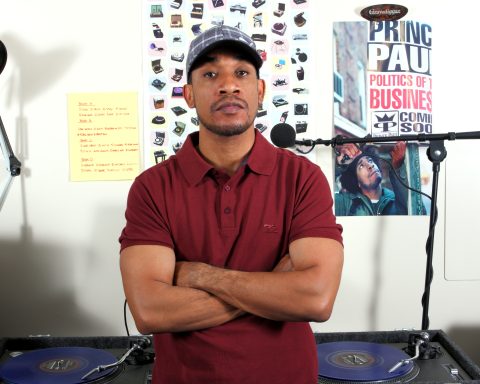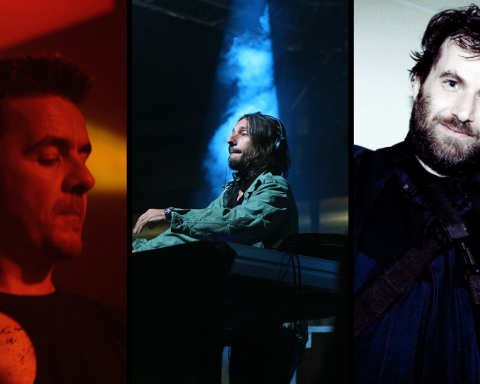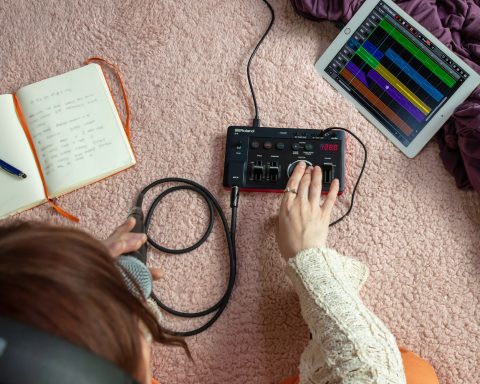The introduction of synthesizers into music production brought about a massive shift in musical and pop culture. From how artists composed and performed songs to visual aesthetics, these electronic sound machines changed how listeners engage with music across the globe. While synth pop has UK roots, it’s important to note that most of the genre’s pioneers also took influence from Kraftwerk, Georgio Moroder, and even the soundtrack of A Clockwork Orange by Wendy Carlos. Take a trip into this groundbreaking style via these ten tracks.
Playlist
Cars by Gary Numan (1979)
Gary Numan rose to fame in 1979 with two UK number-one hit singles that opened doors for synth-laced pop music. After dropping the Tubeway Army moniker, “Cars” was Gary Numan’s debut solo single. However, it was, in fact, written prior to the release of his early classic “Are Friends Electric?” Although only one track from a massive catalog, “Cars” remains Gary Numan’s most successful song and an inspiration for countless synth-obsessed artists who followed.
Enola Gay by OMD (1980)
The electronic duo Orchestral Maneuvers in the Dark (OMD) emerged from Merseyside in the late 1970s with a distinctively raw, melancholic synth-pop sound. Their eponymous debut album caught the ear of budding songwriters like Vince Clarke. Yet it was the anti-war single “Enola Gay” that was released the same year and immortalized the band. The song’s spritely mechanical dance feel comes from an iconic Roland CR-78 drum loop, which provides the perfect platform for its mesmeric synth parts and anthemic vocals.
Just Can’t Get Enough by Depeche Mode (1981)
Inspired by Spandau Ballet’s debut single, Vince Clark would write his final Depeche Mode single, “Just Can’t Get Enough,” before leaving the band that same year. Although the song did wonders for the band’s popularity, its sound foreshadowed Clarke’s pioneering synth-driven pop sound rather than the darker Depeche Mode vibe that later took shape under Martin Gore. “Just Can’t Get Enough” quickly became a dance hit due in no small part to its catchy, whimsical synth parts from Clarke’s Roland JUPITER-4 and Daniel Miller’s ARP 2600.
Don’t You Want Me by The Human League (1981)
With their third studio album, Dare, Sheffield synth innovators The Human League moved away from a moody, experimental sound to a radio-friendly pop style under the guidance of producer Martin Rushent. However, this transformation was not without resistance. Before the song became one of the biggest UK singles of all time, the band’s frontman, Philip Oakey thoroughly disregarded “Don’t You Want Me,” deeming it little more than filler. Many of the song’s catchy synth parts came from the monstrous Roland System 700 modular, giving it a timeless and unique sound.
I Can’t Go for That (No Can Do) by Hall & Oates (1981)
While not part of the British new wave or synth-pop scenes, Hall & Oates greatly impacted the music that followed in the 1980s. The R&B-flavored “I Can’t Go for That (No Can Do)” became the duo’s fourth number-one hit, even inspiring Michael Jackson’s “Billie Jean.” The pair built “I Can’t Go for That (No Can Do)” around a simple drum loop from the Roland CR-78. The distinctive snappy rhythm with its short slapback delay carries the loungy atmospheric synth parts and indelible vocal melodies.
Save a Prayer by Duran Duran (1982)
Duran Duran’s “Save a Prayer” isn’t an overt pop song, opting for a slow-burning swirl. It also showcases the groundbreaking synth-focused song-creation technique of Nick Rhodes, a blueprint for myriad classics. “Save a Prayer” began life as an atmospheric arpeggiator sequence from the Roland SH-2 with a loping feel around which the band could build its parts. This technique of using an arpeggiator as a foundational element proved fruitful, as the group created “Hungry Like the Wolf” in a similar fashion.
New Gold Dream (81/82/83/84) by Simple Minds (1982)
“New Gold Dream (81/82/83/84)” is the title track of the seminal fifth album from Simple Minds, an album that would prove significant for the band and the surrounding musical milieu of the time. The album helped break the US market, while “New Gold Dream” went on to become one of the biggest dance anthems of the 1980s. Along with producer Peter Walsh, the band set out to make the song a true epic, with two drum kits used in the recording process and the original demos edited down from a staggering 10 minutes long.
Sweet Dreams (Are Made of This) by Eurythmics (1983)
In early 1983, Annie Lennox and Dave Stewart broke through with “Sweet Dreams (Are Made of This),” the title track from their groundbreaking sophomore album. As a duo, Eurythmics was as influential visually as they were sonically, with a punk-rock DIY approach that steered away from big producers and high-end studios. Instead, the initial spark of this iconic single came from Dave Stewart’s Movement Systems MCS Percussion Computer and Roland SH-101, which inspired Annie Lennox to write those haunting lyrics.
Blue Monday by New Order (1983)
Widely regarded today as one of the most influential dance songs ever produced, “Blue Monday” helped New Order rise like a phoenix from the ashes of Joy Division. From its minimalistic production—with the unmistakable stuttering intro drum loop—to the euphoric Moroder-influenced bassline and the perfectly understated vocal performance from Bernard Sumner, “Blue Monday” captured the spirit of youthful energy for generations to come.
West End Girls by Pet Shop Boys (1984)
The brooding, post-modernist Pet Shop Boys anthem, “West End Girls,” actually began as a Hi-NRG club banger produced by Bobby Orlando (and featuring plenty of TR-808 cowbell). The posh British rap draws from “The Message” by Grandmaster Flash and the Furious Five, while the drumbeat is inspired by Michael Jackson’s “Billie Jean.” Pet Shop Boys then re-recorded with producer Stephen Hague, who recreated the bassline with several synths, including the Roland JUPITER-6, and added the layers of E-mu Emulator string pads that give the song its distinctive melancholic mood.






